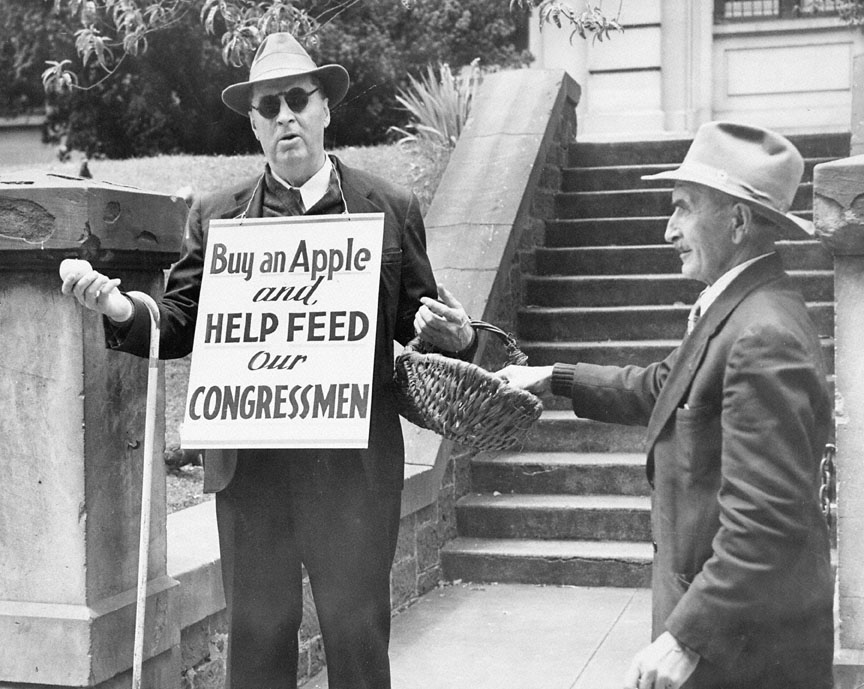- Catalog No. —
- OrHi 24099
- Date —
- n.d.
- Era —
- 1921-1949 (Great Depression and World War II), 1950-1980 (New Economy, Civil Rights, and Environmentalism)
- Themes —
- Government, Law, and Politics
- Credits —
- Oregon Historical Society
- Regions —
- None
- Author —
- Unknown
Buy an Apple, Feed Our Congressmen
“The Tiger of the Senate,” a name given fondly to U.S. Senator, lawyer, and educator, Wayne Lyman Morse, is shown here contributing to a “blind” demonstrators coffer. “The Tiger of the Senate” accurately described this outspoken, often brash, Oregon representative. Born in Wisconsin in 1900, Morse came to Oregon in 1929 to accept his first professorship position at University of Oregon. Within nine months, Morse was appointed dean of the University of Oregon law school, making him the youngest man to serve in that role.
While still dean at the University, Morse gained national attention as a labor arbitrator. In 1935, he began to practice labor arbitration, settling a labor dispute and helping to avoid a strike of the Ferryboatmen Union in Portland. He continued working as a labor arbitrator until 1939, when Secretary of Labor, Francis Perkins, took note of Morse’ mediation successes. Secretary Perkins appointed Morse to the position of Pacific Coast Arbitrator. Morse, committed to fair labor practices and the sanctity of the contract, which he viewed as the rule of law in the field of labor relations, gained favor among both laborers and management.
Notably, Morse’ political career was only beginning. From 1944-1968, he represented Oregon in the U.S. Senate and addressed issues ranging from the antiwar movement of the 1960s to education; civil rights to international law. He was one of only two senators who opposed the Gulf of Tonkin Resolution (the other voice of opposition was Senator Ernest Gruening of Alaska) which initiated U.S. involvement in the Vietnam War and from 1964 until his death in 1974, Morse remained a staunch opponent of the war in Vietnam.
Written by Sarah Griffith, © Oregon Historical Society, 2002.
